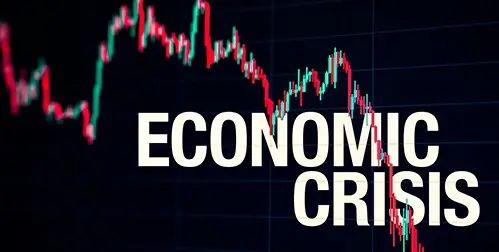Debt Dangers Increase
Tax cuts – we all want them and their promise of financial relief and economic growth. However, these cuts may come at a significant cost that could have long-term consequences. As the U.S. national debt continues to grow at an alarming rate, it faces additional pressure from both tax cuts and looming debt ceilings.
The Congressional Budget Office (CBO) has issued stark warnings regarding the potential impact of the Tax Cuts and Jobs Act (TCJA) becoming permanent. According to the CBO, extending these tax cuts indefinitely could push U.S. debt beyond 200% of GDP by 2047, and surpass 250% by 2054. This could lead to an unsustainable debt burden, threatening the economy with severe repercussions.1
Currently, the total U.S. debt stands at a staggering $36.2 trillion, with about $29 trillion held by the public. The cost to service this debt is already more than $1 trillion annually. That’s greater than the Pentagon’s entire budget. Even if the tax cuts are allowed to expire, the U.S. debt would climb to historic 166% of GDP by 2054. A record-breaking level not seen since the post-World War II era. And the debt would only keep rising after that.2
 3
3
President Trump defended extending the tax cuts. He said they are necessary to “to further unleash our economy”. 4
The White House pointed to their pro-growth policies to counter the CBO. Renewed energy production, deregulation, and spending cuts will help spur economic growth. They will also expand the tax base and lower inflation. These policies could eventually reduce borrowing costs.
But cutting taxes without cutting spending is recipe for disaster. Elon Musk pointed to the high cost of debt as a key reason for DOGE’s drastic cuts.
A Debt Consequences
The Penn Wharton Budget Model shows there would be serious ramifications if U.S. federal debt surpasses 200% of GDP. Such a scenario could result in:5
• Rising Interest Rates & Fiscal Crisis
• Declining Economic Growth
• Inflation & Currency Devaluation
• Cuts to Social Programs & Higher Taxes
• Risk of Default or Forced Austerity
The Imminent Threat of a Debt Crisis
Billionaire investor Ray Dalio, founder of Bridgewater Associates, has been sounding the debt alarm. He recently warned that the U.S. could run out of buyers for its debt. Leading to a situation where the government must either restructure its debt or engage in monetizing its debt. Essentially, printing money to meet obligations. Dalio believes the U.S. deficit must be reduced from 7.2% of GDP to 3% to avoid “shocking developments” in the coming years.6
The Bipartisan Policy Center has also highlighted the risk of the U.S. breaching its debt ceiling. If Congress does not act, the U.S. could hit the so-called “X date” between mid-July and October. This is the point at which the Treasury would no longer be able to meet its financial obligations. The Treasury Department has been using “extraordinary measures” since January to keep the government running and avoid breaching the $36.1 trillion limit. But these measures are expected to run out soon. Without a resolution, the U.S. could face market volatility, higher borrowing costs, and a loss of confidence in its fiscal stability.7
The Global Debt Problem
The U.S. is not alone in facing rising debt challenges. The Organization for Economic Cooperation and Development (OECD) assessed global debt. They found debt financing costs have surged to the highest levels since 2007. The U.S. accounted for over two-thirds of OECD gross borrowing in 2024. Debt financing costs have become the largest expenditure in government budgets around the world. It has surpassed spending on defense, public safety, and housing.8
Conclusion
As the U.S. grapples with unsustainable debt levels, experts continue to warn of the looming financial crisis. While the White House believes economic growth policies will cancel the effects of rising debt, the risks remain high. It may be time for individuals to consider how this looming crisis could impact their financial future. Particularly if runaway debt leads to inflation, higher interest rates, or tax increases.
Uncertain times call for proactive financial planning. Gold and precious metals have historically served as a safe haven during periods of economic instability. Diversifying into tangible assets in a Gold IRA can offer a measure of protection against the unpredictable future of U.S. debt. Contact us today at 800-462-0071 to learn more.






